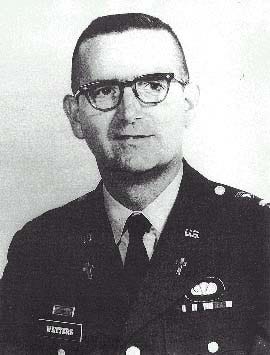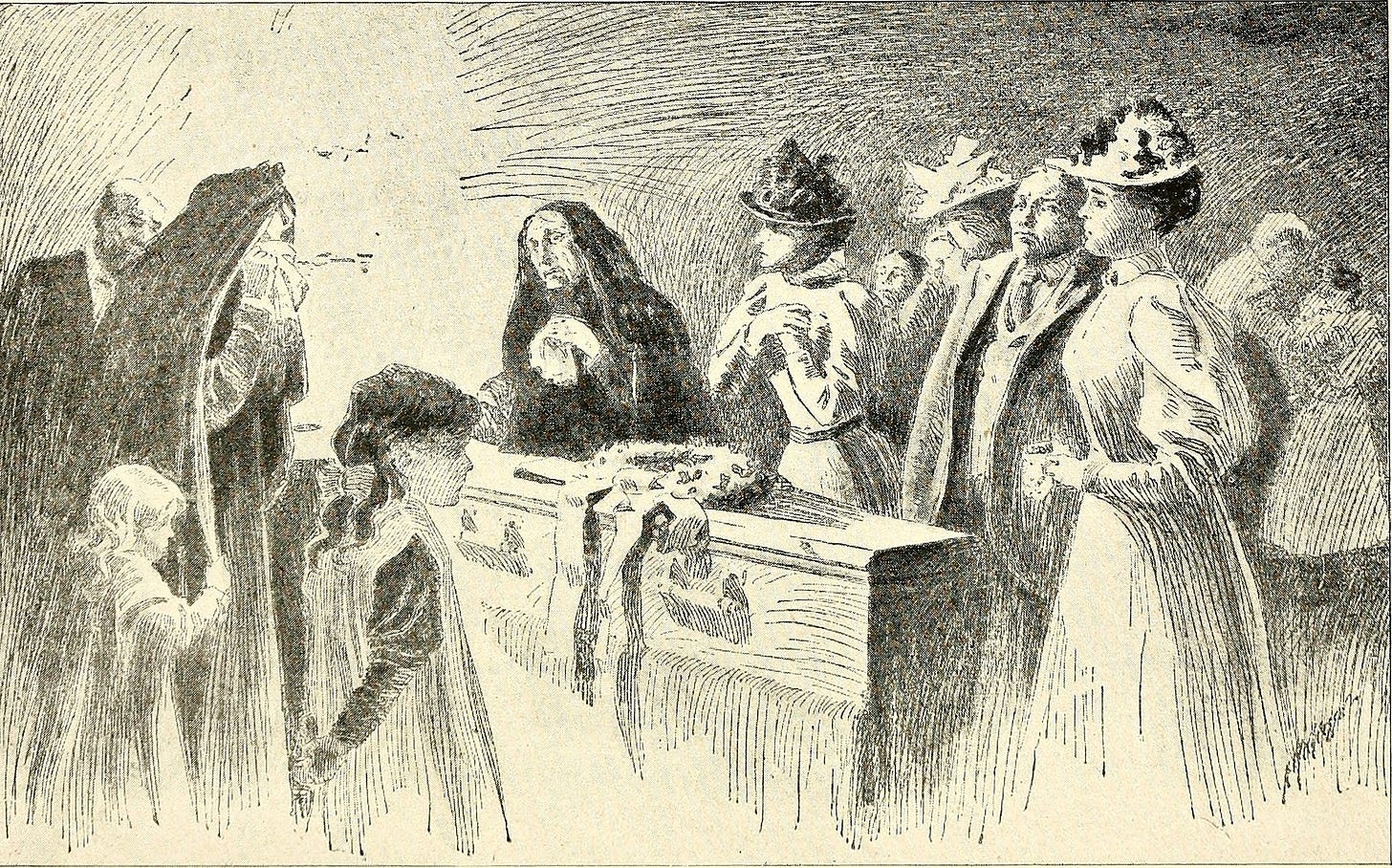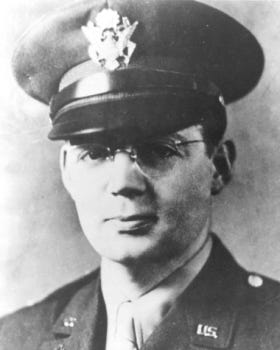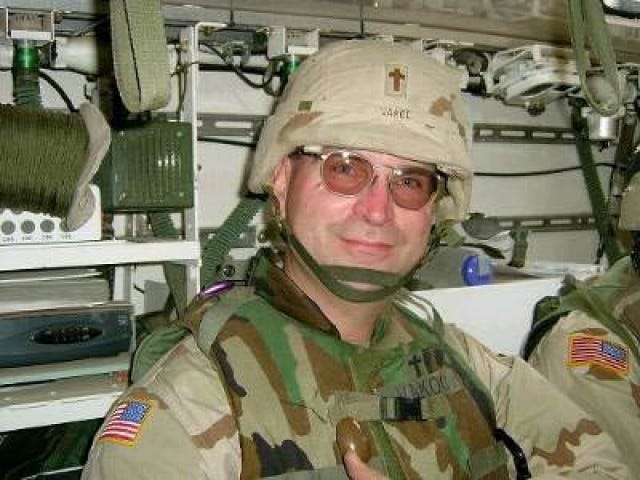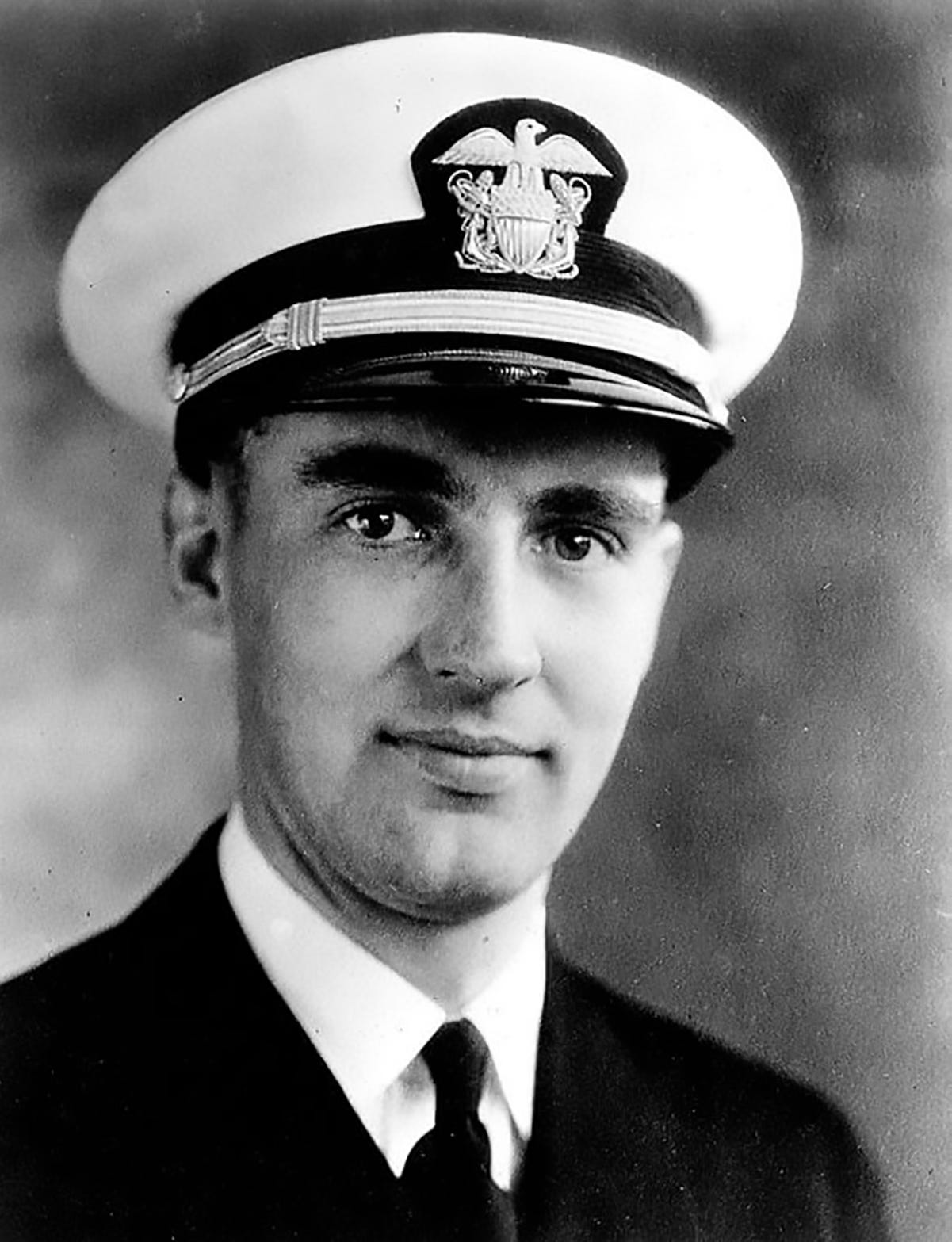While it often means a backyard barbecue or a trip to the beach, Memorial Day is a national day of mourning for the war dead of the United States.
If you take a moment on Monday to remember in prayer those who have died in America’s wars, you might pray for these priests and religious, who are just some of those counted among the nation’s war dead.
Fr. Charles Watters
Jan. 17, 1927 - Nov. 19, 1967
Fr. Charles Watters was ordained a priest of the Archdiocese of Newark in 1953, and in 1962 became an Air National Guard chaplain.
By 1966, Fr. Watters was an army chaplain — with the rank of major — and he was sent to to the war in Vietnam.
In Vietnam, Fr. Watters sought out the front lines, even participating in a combat jump. In July 1967, the priest completed his year-long tour in the country, and extended his stint by another six months.
Fr. Watters was in November 1967 on the front lines of the bloody battle for Hill 875, near Dak To — a 110 hour “border battle” staged in the lead-up to the Tet Offensive.
On November 19, Fr. Watters was with a unit pinned down by an intense fire fight.
For hours, he rushed into the line of fire to carry wounded soldiers to safety, or to offer them the last rites of the Church. For most of the day, Fr. Watters was ahead of the perimeter, even as his unit began to charge forward, because he was tending to those who had already fallen.
He brought Catholics the sacraments, and to everyone who fell on the field of battle he brought packages of food and water. He helped medics bandage the wounded, and he carried soldiers to safety on his back. Eventually, superior officers warned Fr. Watters that if he was not careful, he would be killed. But the priest kept up his efforts late into the afternoon, until he was killed by friendly fire — struck by the exploding shrapnel of an American bomb, while he tended to a wounded soldier inside the American perimeter
Fr. Watters was 40 years old. He was posthumously awarded the Medal of Honor.
Fr. Lawrence Lynch, CSsR
Oct. 17, 1906- April 25, 1945
Fr. Larry Lynch, a captain in United States Army, enlisted as an Army chaplain in September 1941, two months before the bombing of Pearl Harbor assured American entrance into World War II.
His enlistment came nine years after Fr. Lynch was ordained a priest of the Redemptorist order.
Fr. Lynch spent his first Army years stationed in the United States; there was not room on transport ships for priests to be sent to the fighting. But in 1943, Fr. Lynch was sent to the South Pacific, ministering to Army troops, sailors, and Marines as they fought through occupied Pacific islands, making their way to Japan.
In April 1945, Fr. Lynch was attached to the Army’s famed 69th Infantry Regiment — the “fighting 69th” — just before the unit became part of the invasion of Okinawa.
Fighting on Okinawa was fierce, brutal, and long.
Fr. Lynch, who was then 38 years old, ministered for weeks on Okinawa’s front lines as battle raged around him. He sought out the units that were given the most dangerous assignments; he wanted to be their priest.
On April 25, 1945, the 69th Regiment was under heavy shelling. Fr. Lynch heard a young soldier cry out after he was hit with an artillery shell. The priest ran to the soldier’s foxhole and began to offer him the Church’s last rites.
Another shell struck the same foxhole. Fr. Lynch and the young solider were killed instantly.
Months later, when victory on Okinawa was secured, more than 4,000 soldiers attended a Memorial Mass at his graveside on the island.
Sister Mary Lucy Dosh
Sept. 15, 1839- Dec. 29, 1861
In 1861, Sr. Mary Lucy Dosh was a young member of the Sisters of Charity of Nazareth, a music teacher at St. Mary’s Academy in Paducah, Kentucky.
A Union general approached the sisters at St. Mary’s that year, the first year of the Civil War, and asked them to help at a military hospital in the city.
The community’s superior decided that all seven sisters at St. Mary’s would help with the hospital. The sisters closed the school, and began nursing wounded soldiers from both sides of the war.
Sr. Mary Lucy was beloved in the hospital. She sang softly while she worked. She decorated the hospital at Christmas. She was remembered for taking less food at mealtimes, wanting to leave more for recovering patients.
In late December 1861, Sister Mary Lucy contracted typhoid fever, almost certainly from poor sanitation conditions in the hospital. She died on December 29, 1861. It was the Sunday just after Christmas.
Sr. Mary Lucy Dosh was 22 years old.
She had entered the Sisters of Charity of Nazareth not long before her death, but had been a part of the sisters’ community for more than a decade. When she was 11, her parents died and she was sent to live at a school run by the community. It is not clear what year she entered religious life.
After she died, Union soldiers and Confederate prisoners-of-war formed a uniformed honor guard together. Under an order of truce, they escorted her body up the Ohio River aboard a U.S. gunboat, to the St. Vincent Cemetery in Uniontown, Kentucky.
Journalists recorded her burial as “a day the war stopped in Kentucky.”
Fr. John Washington
July 18, 1908 - Feb. 3, 1943
John Washington was ordained a priest of Newark, New Jersey in 1935. With six years of parish ministry under his belt, Fr. Washington joined the Army in December 1941, immediately after he heard about the bombing of Pearl Harbor.
On Jan. 23, 1943, after a year of military training and service on stateside bases, Fr. Washington boarded the SS Dorchester, an ocean liner converted to serve as a troop transport ship. The ship was headed for Greenland with about 900 soldiers who had been ordered to battle in Europe.
Fr. Washington was one of four chaplains aboard: he was the priest, two were Protestant ministers, and one was a rabbi.
On Feb. 3, just after midnight, the Dorchester was hit by a German torpedo off the coast of Newfoundland.
The torpedo damaged the Dorchester’s electrical system, leaving the entire ship in the dark. Soldiers, many of whom had been sleeping below decks, began to panic. But the ship’s four chaplains went calmly through the ship, urging the men to evacuate and directing them to lifeboats.
Not all soldiers made it to the lifeboats, or even to the ship’s deck. And life jackets ran out before all soldiers had been issued one. When that became clear, the four chaplains removed their own life jackets and gave them to nearby soldiers.
The Dorchester sunk, and with it, 674 Americans died. Most of them had not made it to the lifeboats; they died in the frigid ocean waters of the North Atlantic.
Among the dead were the four chaplains. They didn’t board the lifeboats. Instead they helped as many men as they could get off the ship, and then they linked arms, and prayed together as the Dorchester sank.
Soldiers who survived said that as they shivered in lifeboats, or floated in the water hoping for rescue, they listened to the chaplains praying together, singing hymns, and reciting Scripture.
Fr. Washington, then a lieutenant in the Army, was 34 years old.
Fr. Henry Timothy Vakoc
Jan. 8, 1960 - June 20, 2009
On May 29, 2004, Fr. Tim Vakoc celebrated the 12th anniversary of his priestly ordination. Ordained a priest of the Archdiocese of St. Paul and Minneapolis, Fr. Vakoc celebrated his anniversary in Mosul, Iraq, where he was stationed as an Army chaplain.
It was a Saturday. Fr. Vakoc - an Army major - had been in Iraq for six months. He was known to celebrate Mass for the soldiers in his unit no matter how far into the field they were sent. He would take a Humvee even to see just two three soldiers in a remote outpost.
On May 29, Fr. Vakoc was returning to his base from a Mass he had offered for soldiers in the field. The priest’s Humvee struck an IED — a roadside bomb. Fr. Vakoc lost his left eye, was paralyzed on the left side of his body, and suffered a traumatic brain injury.
He was transferred from Iraq just days later, eventually residing at a center for veterans near his family in Minnesota. He suffered infections, and underwent countless surgeries, but eventually Fr. Vakoc built enough strength to stand for a while, to type a few words, to offer a priestly blessing with his right arm.
In 2009, living in a nursing home and still making efforts to recover from his injuries, Fr. Vakoc suffered a fall, and died shortly thereafter.
Fr. Aloysius Schmitt
Dec. 4, 1909 - Dec. 7, 1941
Fr. Aloysius Schmitt was a farm boy, a North American College graduate, a priest of Dubuque, Iowa, and a war hero.
He became a Navy chaplain in 1939, and by December 1941 was serving on board the battleship USS Oklahoma. The ship’s home port was Pearl Harbor, Hawaii. That’s the port where she was moored on December 7, 1941, when Japanese planes launched a sneak attack, firing torpedoes on the naval ships at Pearl Harbor.
Fr. Schmitt was below deck when torpedoes hit the Oklahoma, and the ship began to capsize. The only means of escape from that part of the ship was a small porthole. The priest helped a number of sailors escape, but when it was his turn to swim through the porthole, he instead turned back into the ship, looking for more sailors who might need help.
Fr. Schmitt helped 12 men escape the sinking Oklahoma that day, but he went down with the ship.
He was the first American chaplain to die in World War II.

